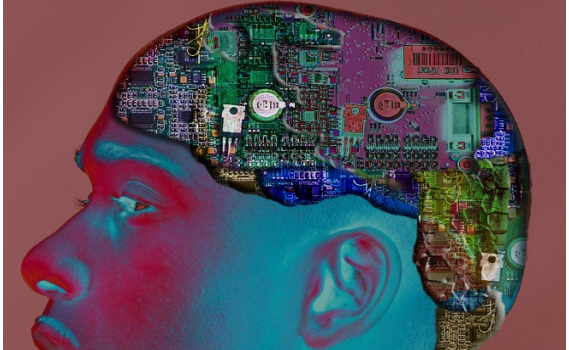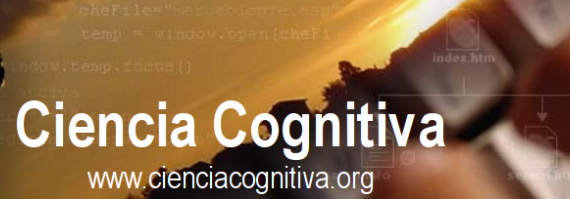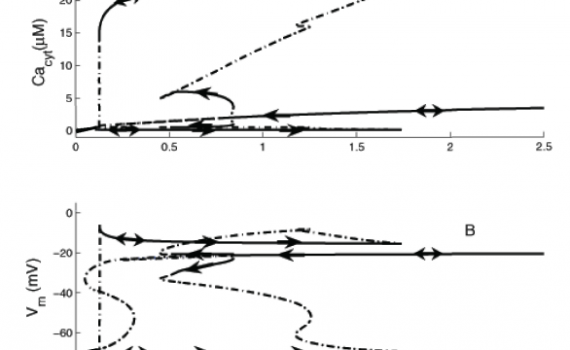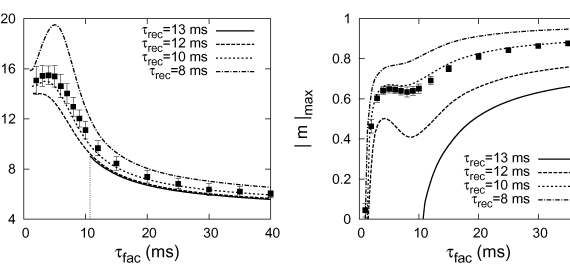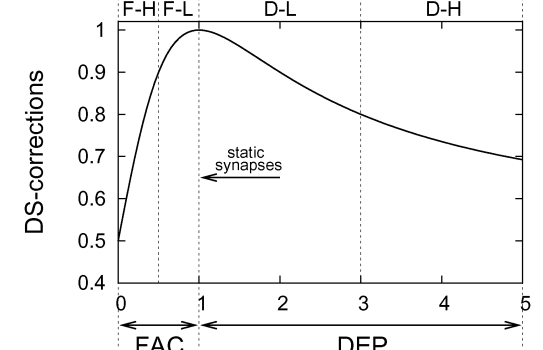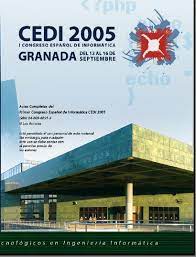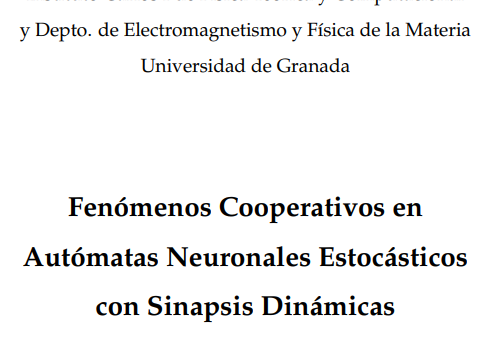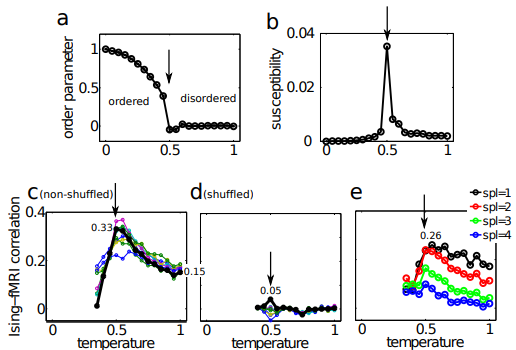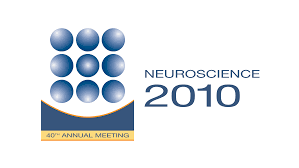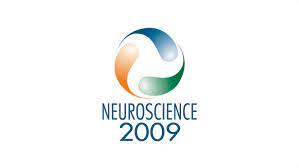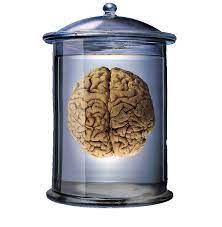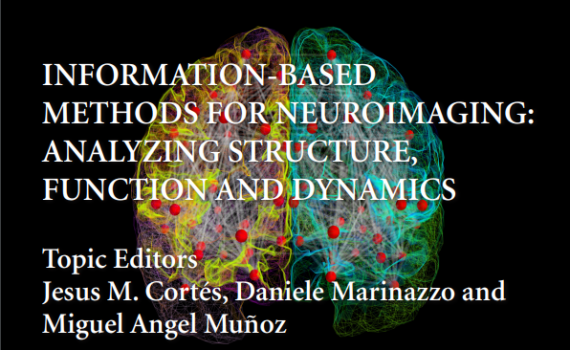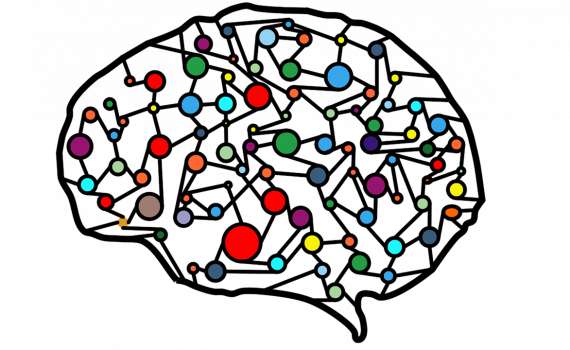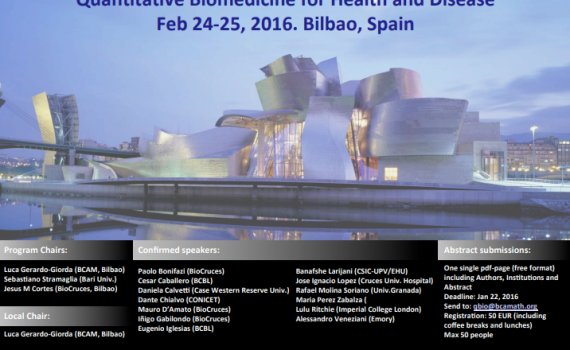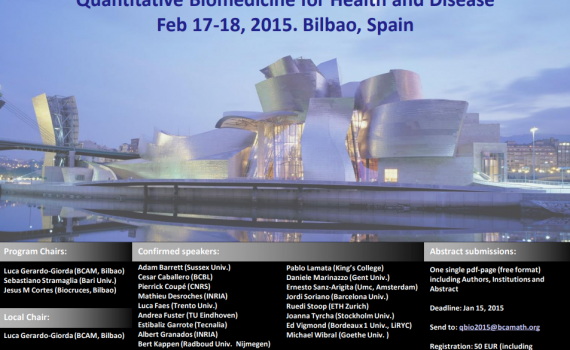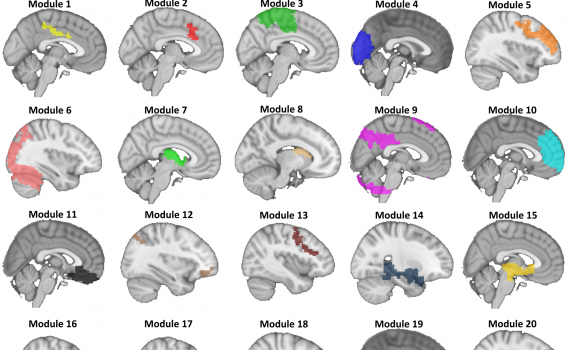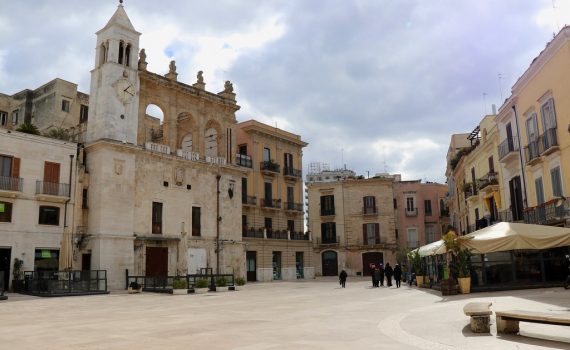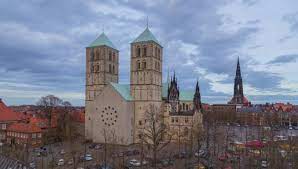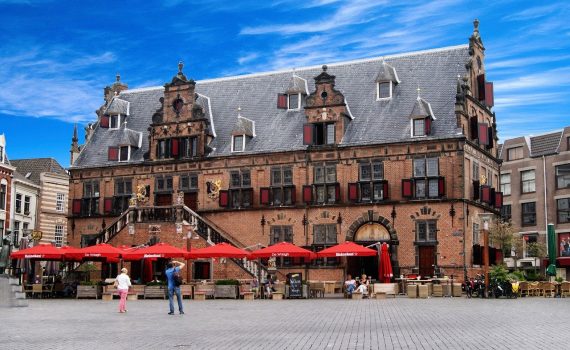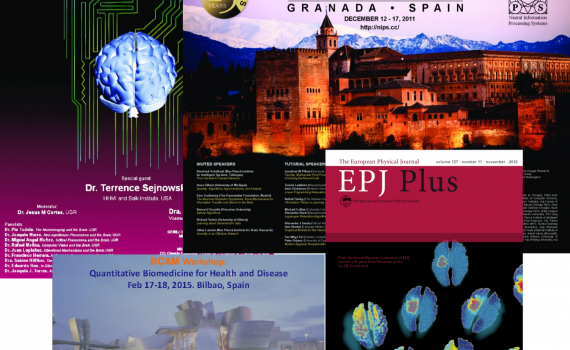J.M. Cortes. La Neurociencia Computacional hoy: I. Que es y por que es dificil su estudio. Ciencia Cognitiva: Revista Electronica de Divulgacion 3: 5-7, 2009 [pdf] La Neurociencia Computacional es una disciplina consolidada, con más de 20 años de desarrollo, y que emplea técnicas muy diversas para entender diferentes computaciones cerebrales. Aquí se introduce brevemente mediante dos artículos. En el primero, “Qué es y por qué es difícil su estudio”, […]
J.M. Cortes. La Neurociencia Computacional hoy: II. Un ejemplo muy representativo en el campo. Ciencia Cognitiva: Revista Electronica de Divulgacion 3: 8-11, 2009 [pdf] La Neurociencia Computacional es un campo reciente, pero bien establecido dentro de las Neurociencias. En un primer artículo Cortes 2009, “Qué es y por qué es difícil su estudio”, explico su principal paradigma: todo proceso mental que tiene lugar en nuestro cerebro tiene un circuito o […]
J.M.A.M. Kusters, J.M. Cortes, W.P.M. van Meerwijk, D.L.Ypey, A.P.R. Theuvenet and C.C.A.M. Gielen. Oscillatory activity in cells: multi-stability and hysteresis. AIP Conference Proceedings 887: 40-50, 2007 [pdf] Oscillatory activity of cells has been the topic of many studies. Oscillatory activity can be due to action potential firing corresponding to the well-known Hodgkin-Huxley (HH) type dynamics of ion-channels in the cell membrane or due to IP3-mediated calcium oscillations in the endoplasmic […]
J.J. Torres, J. M. Cortes and J. Marro. Information processing with unstable memories. AIP Conference Proceedings 887: 115-128, 2007 [pdf] We present a theoretical framework which allows one to study both theoretically and numerically the effect of including activity dependent mechanisms in the dynamics of synapses in simple neural networks. In particular, we study synaptic changes at different time scales from less than the millisecond (fast synaptic noise) to the […]
J.M. Cortes, A. Greve and M.C.W. van Rossum. Dynamical effects on familiarity discrimination. AIP Conference Proceedings 887: 217-223, 2007 [pdf] One process involved in recognition memory is familiarity discrimination. Familiarity distinguishes almost immediately after stimulus presentation whether the item was previously encountered (old) or novel. By using a formalism based on attractor neural networks, we discuss different dynamical processes affecting familiarity discrimination. First, we compare two different familiarity discriminators, the […]
J. Marro, J. M. Cortes and J. J. Torres. Discriminacion, generalizacion y clasificacion mediante automatas neuronales con ruido que induce depresion sinaptica. In CEDI2005, Ed. Thomson, pp. 335-341, 2005 ISBN:84-9732-444-7 [pdf] En una serie de trabajos recientes se estudian varias realizaciones de redes de neuronas artificiales que tienen aspectos notables. Se trata de algoritmos que, además de mostrar una memoria asociativa eficaz, son capaces de detectar similitudes (generalización) y diferencias […]
J.M. Cortes. Cooperative Phenomena in Stochastic Neural Networks with Dynamic Synapses. PhD Thesis, 2005. ISBN: 84-3383-291-3 [pdf]
D. Marinazzo, M. Pellicoro, G. Wu, L. Angelini, J.M. Cortes and S. Stramaglia. Information transfer of an Ising model on a brain network. Computational NeuroScience (CNS) 2013 Meeting. BMC Neuroscience 2013, 14(Suppl 1):P376 We consider an anatomical connectivity matrix (66 nodes), obtained via diffusion spectrum imaging (DSI) and white matter tractography [1], describing the brain at a coarse scale, and implement on it an Ising model with Glauber dynamics, estimating […]
A Erramuzpe, GJ Ortega, J Pastor, RG de Sola, D Marinazzo, S Stramaglia and JM Cortes. Redundancy and synergetic circuits in inter-ictal activity of human temporal lobe epilepsy. Society for Neuroscience Annual Meeting 2014. The use of information theory in neuroscience have allowed to evaluate the interaction between groups of correlated variables, revealing their functional role and underlying circuits capable of processing information (Borst and Theunissen, 1999, Nat Neurosci; Panzeri […]
A Erramuzpe, JM Encinas, A Sierra, M Maletic-Savatic, AL Brewster, AE Anderson, S Stramaglia and JM M Cortes. Variations in whole-brain functional connectivity across seizure chronification in a mouse model of mesial temporal lobe epilepsy. Society for Neuroscience Annual Meeting 2014. How does the brain become epileptic? Although this is a major question for modern Neurology, we do not have yet a proper answer. Despite of intense research in the […]
I. Ortega-Martinez, J. Gardeazabal, A. Erramuzpe, R. Fernandez-Suarez, E. Alonso-Tejerina, G. Perez-Yarza, J.M. Cortes, I.M. de la Fuente, A. Asumendi and M.D. Boyano. Serum Proteomics in Melanoma Biomarker Discovery. 13th Annual World Congress of the Human Proteome Organization 2014. Introduction and objectives Patients with early-stage melanoma and no lymph node involvement have a high likelihood of cure after complete excision of the tumor by surgery. However, there is no effective […]
J.M. Cortes, J. Goñi, M.A. Muñoz and D.R. Chialvo. Generic dynamics at criticality links brain structure to function. Frontiers in Neuroinformatics, 2013 [pdf] The relation, influence, and constraints between structure and function of the human brain is not yet well understood, even for the widely studied resting state. In the last decade, different topological descriptors, and dynamical models such as neural mass or more complicated coupling models have shown how […]
V. Maki-Marttunen, J.M. Cortes, M. Villareal and D.R. Chialvo. Disruption of transfer entropy and inter-hemispheric brain functional connectivity in patients with disorder of consciousness. Computational NeuroScience (CNS) 2013 Meeting. BMC Neuroscience 2013, 14(Suppl 1):P83 [pdf] CNS 2013 Best Student Poster Award Winner. Recent studies suggest that the functional organization of brain networks is altered in patients with severe disorders of consciousness (DOC), including coma [1]. A better characterization of these […]
J.M. Cortes, D. Marinazzo, P. Series, M.W. Oram, T.J. Sejnowski and M.C.W. van Rossum. Neural adaptation reduces energy cost while preserving coding accuracy. Society for Neuroscience Annual Meeting 2010 Neurons in the primary visual cortex initially respond vigorously when a preferred stimulus is presented, but typically adapt as stimulation continues. The functional consequences of adaptation are unclear. Typically a reduction of firing reduces single neuron accuracy, but it has been […]
J.M. Cortes, D. Marinazzo, P. Tudela and E. Madrid. Causal connectivity analysis of tracking faces in presence of repeated distractors during working memory tasks. Society for Neuroscience Annual Meeting 2009 Recognition of a specific visual target among equally familiar distracters requires neural mechanisms for tracking items in working memory. High Density EEG recordings were obtained from sixteen right-handed normal participants while they performed a visual working memory task in which […]
L. Mancera, R. Jimenez-Galan, J.M. Cortes. Visual Information Processing trough a simulated retina: Linear vs Bayesian reconstruction of natural movies. Society for Neuroscience Annual Meeting 2009 In vision neuroscience much of the knowledge about information processing comes from experiments in presence of highly reduced stimuli: orientated bars, drifting gratings or dots and sometimes combinations of them. Very often, the implicit linearity of the stimuli works quite well to explain linear […]
J.M. Cortes, D. Marinazzo, P. Series, M. Oram, T.J. Sejnowski and M.C.W. van Rossum. Heterogeneous adaptation effects on visual population coding efficiency. COSYNE 2008: 5th Computational and Systems Neuroscience Meeting The cellular and synaptic mechanisms underlying visual adaptation have extensively been debated during the last years (for reviews see Kohn 2007 and Schwartz 2007). However, the effect of neural adaptation on information coding is difficult to study experimentally as it […]
INFORMATION-BASED METHODS FOR NEUROIMAGING: ANALYZING STRUCTURE, FUNCTION AND DYNAMICS. Editor(s): Jesus M Cortes, Daniele Marinazzo and Miguel Angel Muñoz [pdf]
Media: Diario Medico – Miden la conectividad cerebral en el momento de despertar del coma Media: Diario Medico Web – Miden la conectividad cerebral en el momento de despertar del coma Media: Basque Research. Elhuyar Fundazioa ES – Cuantifican por tecnicas de neuroimagen los daños cerebrales de trastornos de consciencia Media: Basque Research. Elhuyar Fundazioa EN – Neuroimaging methods used to show disturbances of brain function in DOC patients Media: […]
Luca Gerardo Giorda, Sebastiano Stramaglia and I organize a workshop series on quantitative biomedicine. For the year 2016, you can check: The poster conference The book of abstracts
Luca Gerardo Giorda, Sebastiano Stramaglia and I organize a workshop series on quantitative biomedicine. For the year 2015, you can check: The poster conference The book of abstracts
How is brain function influenced and constrained by its underlying structural connectivity? To reply to this question, we derive a new method that provides a new brain atlas that –emerging out of a careful hierarchical clustering analysis– combines both structural and functional data to discover network modules common to both data sets. A region within this atlas is functionally connected and structurally wired (with fibers). To the best of our […]
Paolo Bonifazi School of Physics and Astronomy. Tel Aviv University, Israel. Bridging the gap between structural and functional connectivity in neuronal microcircuits: experimental and theoretical insights May 30, 2014. 12.00am One of the main challenges of modern neuroscience is to understand how network dynamics are related to anatomical connectivity. Structural–functional studies of neuronal networks have recently benefited from considerable progress in different areas of investigation. Advances in molecular genetics and […]
Roberta Russo Department of Physics. University of Napoli, Italy Brain modularity controls the critical behavior of spontaneous activity May 9, 2014. 10.00am The human brain exhibits a complex structure made of scale-free highly connected modules loosely interconnected by weaker links to form a small-world network. These features appear in healthy patients whereas neurological diseases often modify this structure. An important open question concerns the role of brain modularity in sustaining […]
Sebastiano Stramaglia. Ikerbasque Visiting Professor. BioCruces. Bari University, Italy Neuroimaging Methods for Systems Neuroscience and Disease: Insights from Information Theory and Causality Jan 28, 2014. 8.30am Contemporary neuroimaging methods can shed light on the basis of human neural and cognitive specializations, with important implications for neuroscience and medicine. Human brain shows properties of both segregation and integration; the first property accounts for its modularity and specialization, whilst the integration is […]
Marcos J. Arauzo-Bravo Max Planck Institute for Molecular Biomedicine. Muenster, Germany Development of computational tools for understanding the crosstalk between genetic and epigenetic networks Fri Feb 8, 2013. 1.00pm We develop computational biology tools which help to close the gap between the biological and computational way of explaining biological problems. We use such tools to understand the complexity of the hidden DNA language that codifies the regulation of the gene […]
Alberto Llera PhD student Donders Institute for Brain, Cognition and Behaviour Radboud University Nijmegen, The Netherlands Análisis de datos EEG/MEG y su aplicación en la construcción de Interfaces Cerebro-Máquina Adaptativas Thu Jan 31, 2013. 1.00pm La identificación y caracterización de patrones de actividad cerebral es en los últimos años un área muy intensa de investigación científica y con importantes aplicaciones no sólo biomédicas y neurológicas, sino también para la industria […]
La Herradura, Tropical Coast of Granada, Spain The Granada Seminar titled “PHYSICS, COMPUTATION, and THE MIND” was done on 17-21 September 2012. More information at ERGODIC/UGR
This is a list of cool posters in which my name has been pressed in so far (chronological order): 1. As the moderator in the Brain Panel Discussion here 2. As the Spanish Ambassador in the NIPS 2011 Annual Conference here 3. As the Front Cover in the journal EPJ-Plus here 4. As the program chair in the BCAM Workshop: Quantitative Biomedicine for Health and Disease. Feb 17-18, 2015 here
Dr Joaquin Goñi Indiana University, USA Complex Systems in Neuroscience Thu Sept 13, 2012. 1.00pm Advanced neuroimaging techniques permit to get estimates of neural organization, connectivity and functioning within the human brain. In the last years, there is an increasing evidence that these aspects are not independent of each other but closely inter-related both in healthy and in impaired conditions. By using different frameworks, mainly Network theory, Information theory and […]

